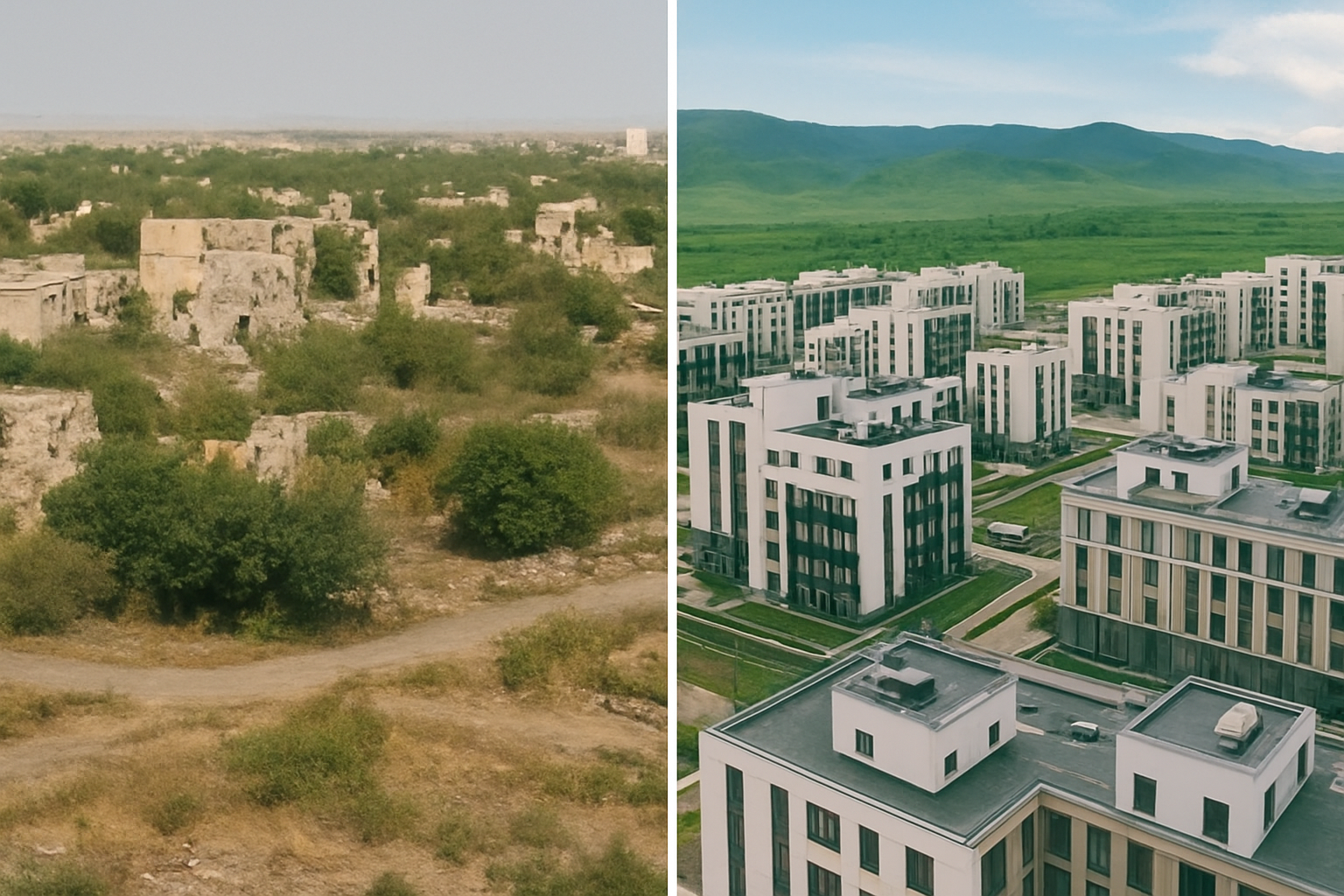Garabagh’s wounds turn to strength through reconstruction

There are places in the world where the soil remembers. Where every stone, every tree, every breeze carries the memory of a people once rooted, then torn away. Garabagh is one such place. For decades, it stood as a silent witness to destruction, its villages razed, its homes dismantled—stone by stone—by Armenian forces during the years of occupation. What was once a vibrant land of culture and community was reduced to rubble, its very foundations looted and erased in an attempt to rewrite history.
But history has a way of returning home.
Today, Garabagh is rising from its ashes—not merely as a reconstruction project, but as a symbol of national resilience and spiritual restoration. The wounds of war, once raw and open, are now healing. The scars remain, but they are no longer signs of defeat. They are reminders of survival.
The Great Return program, launched by the Azerbaijani government, is not just a policy—it is a movement. It is the embodiment of a promise made to those who were displaced, to those who waited decades to walk again on the soil of their ancestors. And now, that promise is being fulfilled with determination and dignity.
More than 50,000 people have already resettled in Garabagh. Among them, 22,000 are former internally displaced persons—families who were once forced to flee, now returning to the very homelands. These are not just numbers; they are stories of return, of rekindled hope, of lives rebuilt from the ground up.
The transformation is visible across the region. In the heart of Garabagh, in the city of Khankendi and its surrounding areas, the rhythm of life is returning. In the settlement of Karkijahan, in seven villages of the Aghdara district, and in eleven villages of the Khojaly district, preparations for resettlement are in full swing. A total of 19 residential areas are being readied for the return of their rightful inhabitants. Roads are being paved, homes are being rebuilt, and essential services are being restored.
This is not merely about infrastructure—it is about identity. It is about reclaiming what was lost, not just physically, but emotionally and culturally. The return to Garabagh is a return to roots, to memory, to belonging.
What makes this revival even more remarkable is the speed and scale at which it is unfolding. Schools, clinics, and cultural centers are being established. In Khankendi, the newly established Garabagh University stands as a beacon of education and renewal. Children now walk to school where tanks once rolled. Families gather in homes where silence once reigned.
The symbolism is powerful. Where once there was desolation, now there is laughter. Where once there was exile, now there is return.
Yet, this rebirth is not without its challenges. The land still bears the remnants of war—mines, ruins, and the psychological weight of trauma. But the people of Azerbaijan are not deterred. They are rebuilding not just with bricks and mortar, but with faith and fortitude.
The international community must take note. The reconstruction of Garabagh is not just a national project—it is a human one. It is a testament to what is possible when a people refuse to surrender to despair. It is a model for post-conflict recovery rooted in justice, memory, and hope.
As the sun rises over the valleys of Garabagh, it illuminates more than just new buildings. It shines on a people who have endured, who have returned, and who are now writing a new chapter—one of peace, prosperity, and permanence.
Garabagh is no longer a land of loss. It is a land of life.
Here we are to serve you with news right now. It does not cost much, but worth your attention.
Choose to support open, independent, quality journalism and subscribe on a monthly basis.
By subscribing to our online newspaper, you can have full digital access to all news, analysis, and much more.
You can also follow AzerNEWS on Twitter @AzerNewsAz or Facebook @AzerNewsNewspaper
Thank you!

